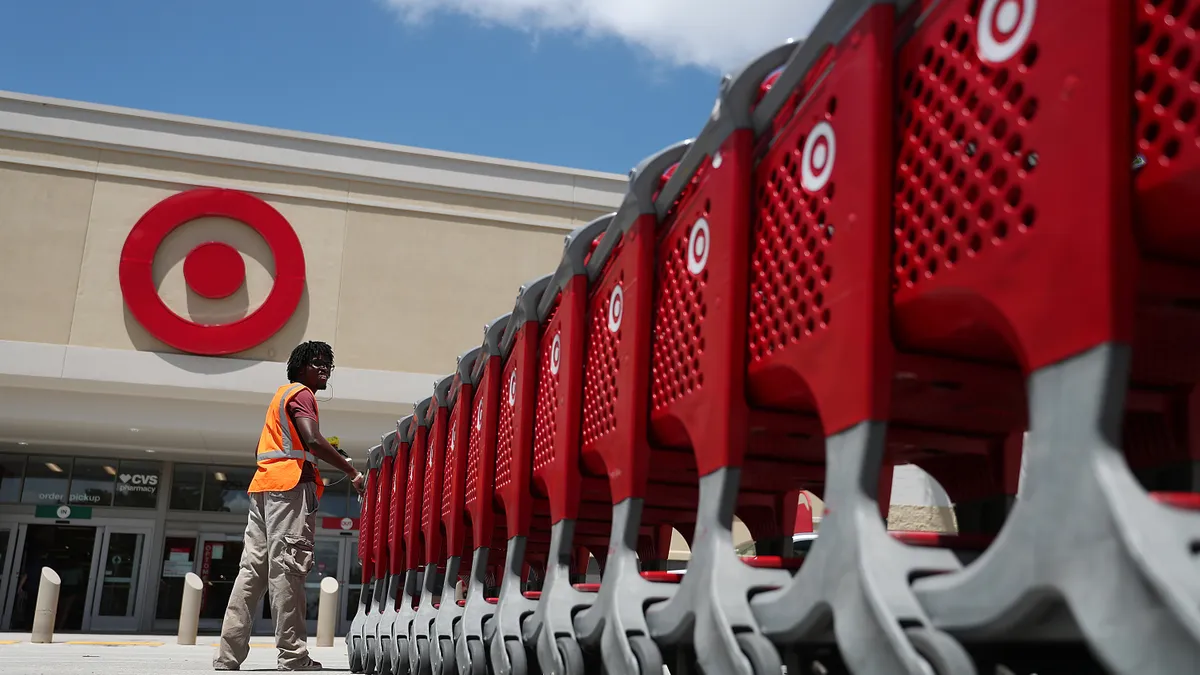Many CFOs facing the tightest labor market in decades aim to hold on to employees this year by giving them a raise well above 3%. It may not be not enough.
As inflation far outpaces pay gains, workers are quitting at the highest rate in years, and nearly one out of every three have boosted their pay at new employers by more than 30%, the Conference Board said.
CFOs are letting wages lag inflation expecting that, as COVID-19 recedes, sidelined workers will rejoin the labor force, job openings will fall from near-record levels and wage pressure will ease, labor market experts said.
Yet CFOs should not count on a quick end to the push for more pay and the fight for talent, the labor market experts said. The U.S. population is aging, shrinking the pool of workers. Also, retirement by many workers early in the pandemic means that labor force participation, at 62.3% last month, may not return to pre-pandemic levels.
Rather than wait for a recovery in the supply of labor to relieve wage pressure, CFOs need to take steps themselves to attract and retain workers and win the talent war, the experts said.
"We assume everything is a labor market problem, rather than a management of people problem, a public policy issue rather than an employer issue — it’s not," according to Peter Cappelli, director of the Center for Human Resources at the University of Pennsylvania’s Wharton School. "There’s a lot of things management can do, a whole field of managing people, that we ignore."
While raising wages, CFOs should consider drawing up an incentive plan linking at least some of the increases to gains in productivity, the labor market experts said. They should also identify the benefits most valued by each employee group, and those that yield the biggest gains at the lowest cost.
CFOs should also fund programs designed to sustain employee mental health and create a sense of community, including training for supervisors on ways to build close connections with their direct reports, they said. Such steps will stabilize payrolls by helping to buffer employees against the jolt from inflation.
'Price-wage' spiral
The rising cost of consumer goods may have already sparked a "price-wage" spiral that pushes up compensation costs, according to Moody’s.
The Consumer Price Index last month rose 7.9%, the fastest rate in 40 years, the Labor Department said Thursday. The producer price index for final demand, a measure of what suppliers charge, soared 9.7% in January from the prior year.
"A wage-price spiral — where higher prices and rising wages feed each other, leading to faster increases in each — may already be in the works in some industry segments or regions," the Conference Board said.
Small businesses consider inflation their biggest challenge, and the proportion of companies that raised prices last month surged to a 48-year high, the National Federation of Independent Business said Tuesday.
As inflation speeds up, wage gains are slowing. Inflation-adjusted average weekly earnings fell 2.3% last month from a year earlier, the Labor Department said Thursday.
Nearly two-thirds of workers (62%) worry that in coming months inflation will further erode their income, the Conference Board said.
The quits rate, or the number of workers who left their jobs as a percent of total employment, has wavered since June between 2.8% and 3%, the highest rate since 2000, the Labor Department said Wednesday.

Workers are jumping ship, with 29% scoring at least 30% higher pay at new employers, the Conference Board said. Nearly two out of every three workers (63%) who quit jobs last year blame their departures on low pay, Pew Research Center said Wednesday.
"This is a highly competitive market, the likes of which I have not seen before," according to Shawn Cole, co-founder at Cowen Partners, an executive search firm. "There’s a lot of pent up demand for talent."
Aiming to hold on to employees, two out of five companies (44%) plan to raise pay more than 3% this year, Payscale found in a survey of 5,578 respondents involved in compensation at companies in the U.S., Canada and other countries.
Some surveys revealed that businesses plan to increase pay as much as 5.2% this year. Still, 85% of respondents to the Payscale survey are concerned that pay raises will not offset inflation.
"Employers are scrambling to figure out what to offer new hires and how to structure salary increases to retain their current workforce," Payscale Chief People Officer Shelly Holt said. "Compensation planning has never been more important to get right."
U.S. CEOs rank the tight labor market as their No. 1 external stress point for 2022, the Conference Board said. "As bargaining power shifts from employers to workers, companies should prepare for higher wage and benefit costs along with increased turnover in 2022."
Workplace enticements
Companies seeking to attract and retain employees are offering workers an array of enticements, including signing bonuses, flexible work schedules and grants for higher education, the labor market experts said.
"You have to prioritize the things that are going to be relevant to your employee population," Catherine Hartmann, North America rewards practice leader at Willis Towers Watson, said in an interview.
CFOs should work with human resources staff to identify the benefits most appealing to a range of employee groups, she said. For example, a $2,000 award for exceptional work may appeal more to a 25-year-old employee than a higher match to a 401(k) contribution.
"The smart thing for CFOs to do is push HR people a little harder and say, 'What kinds of things will keep people here, and which ones are expensive and which are cheap and easy?’" according to Cappelli, the Wharton professor.
Signing bonuses and mental health referrals are inexpensive and well appreciated compared with many other benefits, he said. So too with tuition reimbursement programs — "they’re incredibly cheap because nobody uses them."
CFOs can determine the payoff from retention spending by gathering data needed to gauge the cost of employee turnover, he said. "This is a pretty simple idea, but most employers have no idea of the answer, which is embarrassing — kind of astonishing."
Although many CFOs measure the cost per hire, only one in four companies put in the effort to track the quality of new hires, he said in an interview.
"This is all CFO-driven," he said. "They’re not asking those questions because in some cases they have no idea what to ask."
Culture is key
Since the start of the pandemic, many of the more than 150 portfolio companies at Main Street Capital have sought to attract and retain employees by raising wages, creating incentive programs and stressing culture and employee development, CFO Jesse Morris said.
Main Street Capital companies generate annual revenue from $10 million to $150 million in industries ranging from construction and manufacturing to energy and telecommunications.
Many of the companies sped up streamlining plans after the onset of COVID-19, Morris said in an interview. Greater efficiency helped them adjust to the tight labor market and surging demand from customers unable to get goods from other producers because of supply chain bottlenecks.
Some companies have linked wage increases to productivity gains, he said. They have also boosted efficiency by investing in capital equipment, redesigning assembly processes and emphasizing Kanban-style controls on inventory.
In addition, "a lot of companies are spending a lot of time and effort on having the right work environment," Morris said. "You’ve got to be competitive on pay, but at the end of the day you will also lose people if you don’t have the right work environment — you have to give the opportunity for people to be challenged and grow."
CFOs should not overlook the gains for hiring and retention from showing sensitivity to the emotional health of their employees both at and beyond the workplace, the labor market experts said.
"The idea of being treated well and treated with respect and knowing when something tragic happens in your life that you’ll get compassion from your employer — that type of loyalty goes so far," Hartmann said.
"I have heard many people say, 'I was thinking of leaving an organization but then my father passed away and the way the organization treated me told me something about the people I work with and the type of place I want to be part of.’"
CFOs can improve hiring and retention at a low cost by training supervisors in ways to promote employee mental health, Cappelli said.
"The single most important thing that holds people to organizations is social relations," he said. "Probably the cheapest investment you could make in keeping people is to upgrade the skills of your supervisors — that would probably have the biggest payoff."
Supervisors should call their direct reports each week for a 30-minute conversation, he said.
"The first thing you should ask is, 'How’re you doing?’" he said, noting that sensitivity needs to be authentic. "The problem is trying to fake it."














![Salesforce AI's CEO sits onstage across from Cristina Criddle. Screens that say Human[X] hang behind them.](https://imgproxy.divecdn.com/J71WpXWHjr8jmbCw_PX7Cp2YH7Pmo8dP66Pz0SEPfw4/g:nowe:0:104/c:1024:578/rs:fill:1200:675:1/Z3M6Ly9kaXZlc2l0ZS1zdG9yYWdlL2RpdmVpbWFnZS9HZXR0eUltYWdlcy0yMjA0NjUxNDM0LmpwZw==.webp)






